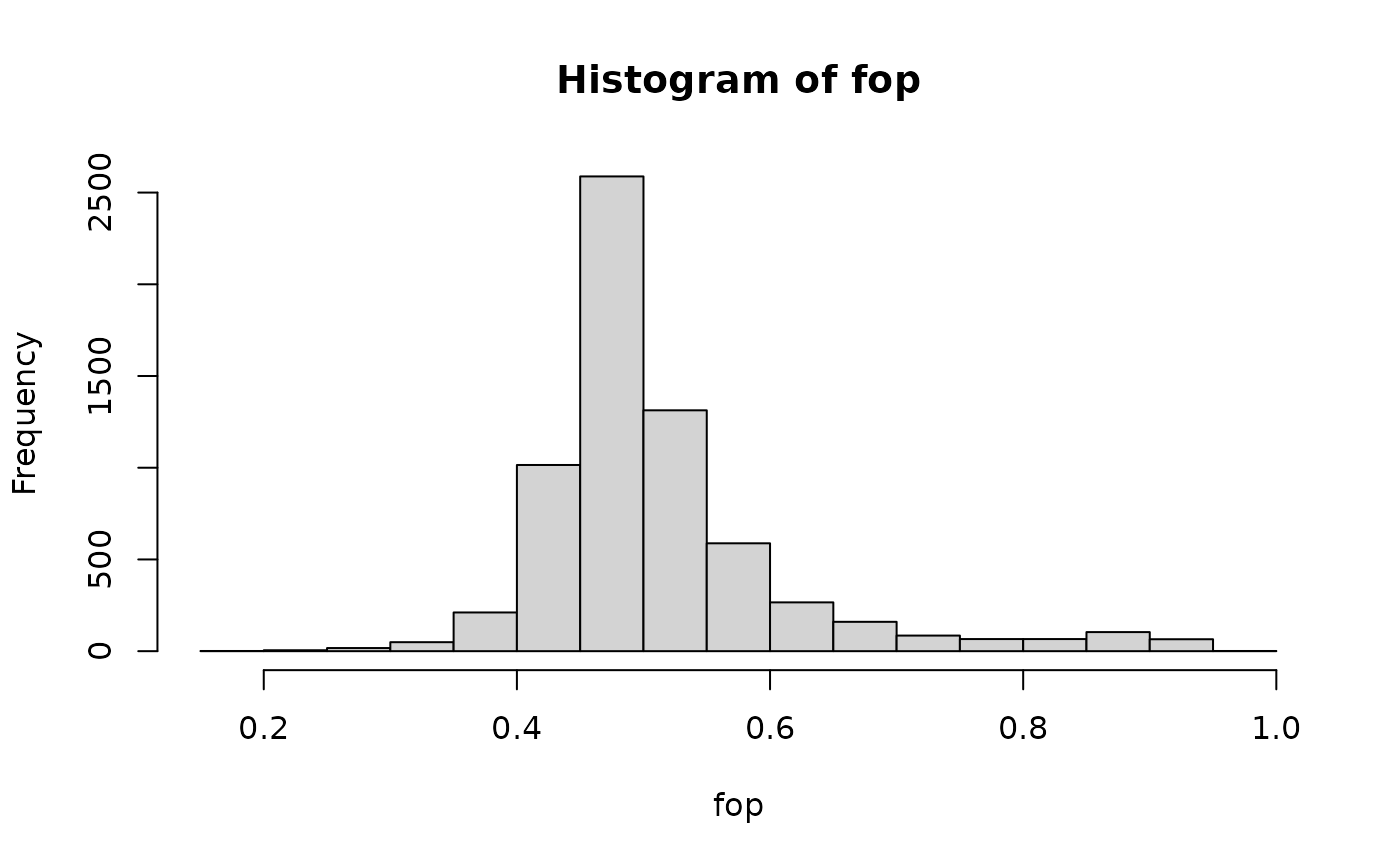get_fop calculates the fraction of optimal codons (Fop) for each
coding sequence, which represents the proportion of codons that are
considered optimal for translation efficiency. Higher Fop values suggest
stronger selection for optimal codon usage.
Usage
get_fop(cf, op = NULL, codon_table = get_codon_table(), ...)Arguments
- cf
A matrix of codon frequencies as calculated by
count_codons(). Rows represent sequences and columns represent codons.- op
A character vector specifying which codons are considered optimal. If not provided, optimal codons will be determined automatically using
est_optimal_codons().- codon_table
A codon table defining the genetic code, derived from
get_codon_table()orcreate_codon_table().- ...
Additional arguments passed to
est_optimal_codons()when optimal codons are determined automatically.
Value
A named numeric vector of Fop values (ranging from 0 to 1). Names correspond to sequence identifiers from the input matrix. Higher values indicate greater usage of optimal codons.
References
Ikemura T. 1981. Correlation between the abundance of Escherichia coli transfer RNAs and the occurrence of the respective codons in its protein genes: a proposal for a synonymous codon choice that is optimal for the E. coli translational system. J Mol Biol 151:389-409.
Examples
# Calculate Fop for yeast genes (optimal codons determined automatically)
cf_all <- count_codons(yeast_cds)
fop <- get_fop(cf_all)
head(fop)
#> YPL071C YLL050C YMR172W YOR185C YLL032C YBR225W
#> 0.4315068 0.7785714 0.4763271 0.6009390 0.5112219 0.4846066
hist(fop, main = "Distribution of Fop values")
